Android系统揭秘(一)-Activity启动流程(上)
public ActivityResult execStartActivity(
Context who, IBinder contextThread, IBinder token, Activity target,
Intent intent, int requestCode, Bundle options) {
IApplicationThread whoThread = (IApplicationThread) contextThread;
…
try {
…
int result = ActivityManager.getService()
.startActivity(whoThread, who.getBasePackageName(), intent,
intent.resolveTypeIfNeeded(who.getContentResolver()),
token, target != null ? target.mEmbeddedID : null,
requestCode, 0, null, options);
checkStartActivityResult(result, intent);
} catch (RemoteException e) {
throw new RuntimeException(“Failure from system”, e);
}
return null;
}
首先调用ActivityManager的getService方法来获取AMS的代理对象,接着调用它的startActivity方法
这里需要注意的是,Android8.0之前是通过ActivityManagerNative的getDefault未获取AMS的代理对象的, 现在这个逻辑封装到了ActivityManager中而不是ActivityManagerNative中。
frameworks/base/core/java/android/app/ActivityManager.java
@SystemService(Context.ACTIVITY_SERVICE)
public class ActivityManager {
public static IActivityManager getService() {
return IActivityManagerSingleton.get();
}
private static final Singleton IActivityManagerSingleton =
new Singleton() {
@Override
protected IActivityManager create() {
// Context.ACTIVITY_SERVICE值为"activity"
final IBinder b = ServiceManager.getService(Context.ACTIVITY_SERVICE);
final IActivityManager am = IActivityManager.Stub.asInterface(b);
return am;
}
};
}
getService方法调用了IActivityManagerSingleton的get方法,IActivityManagerSingleton是一个Singleton类。
这段代码采用的是AIDL,IActivityManager.java类是由AIDL工具在编译时自动生成的, 要实现进程间通信,服务器端也就是AMS只需要继承IActivityManager.Stub类并实现相应的方法就可以了。
注意Android8.0之前并没有采用AIDL,而是采用了类似AIDL的形式, 用AMS的代理对象ActivityManagerProxy来与AMS进行进程间通信, Android8.0去除了ActivityManagerNative的内部类ActivityManagerProxy, 代替它的是IActivityManager,它是AMS在本地的代理。 回到Instrumentation类的execStartActivity方法中, 从上面得知execStartActivity方法最终调用的是AMS的startActivity方法。

我们先看看AMS里面的代码
frameworks/base/services/core/java/com/android/server/am/ActivityManagerService.java
@Override
public final int startActivity(IApplicationThread caller, String callingPackage,
Intent intent, String resolvedType, IBinder resultTo, String resultWho, int requestCode,
int startFlags, ProfilerInfo profilerInfo, Bundle bOptions) {
return startActivityAsUser(caller, callingPackage, intent, resolvedType, resultTo,
resultWho, requestCode, startFlags, profilerInfo, bOptions,
UserHandle.getCallingUserId());
}
@Override
public final int startActivityAsUser(IApplicationThread caller, String callingPackage,
Intent intent, String resolvedType, IBinder resultTo, String resultWho, int requestCode,
int startFlags, ProfilerInfo profilerInfo, Bundle bOptions, int userId) {
// 判断调用者进程是否被隔离,如果被隔离则抛出SecurityException异常
enforceNotIsolatedCaller(“startActivity”);
// 检查调用者是否有权限,如果没有权限也会抛出SecurityException异常
userId = mUserController.handleIncomingUser(Binder.getCallingPid(), Binder.getCallingUid(),
userId, false, ALLOW_FULL_ONLY, “startActivity”, null);
// TODO: Switch to user app stacks here.
return mActivityStarter.startActivityMayWait(caller, -1, callingPackage, intent,
resolvedType, null, null, resultTo, resultWho, requestCode, startFlags,
profilerInfo, null, null, bOptions, false, userId, null, “startActivityAsUser”);
}
可知,AMS使用ActivityStarter来启动Activity
frameworks/base/services/core/java/com/android/server/am/ActivityStarter.java
final int startActivityMayWait(IApplicationThread caller, int callingUid,
String callingPackage, Intent intent, String resolvedType,
IVoiceInteractionSession voiceSession, IVoiceInteractor voiceInteractor,
IBinder resultTo, String resultWho, int requestCode, int startFlags,
ProfilerInfo profilerInfo, WaitResult outResult,
Configuration globalConfig, Bundle bOptions, boolean ignoreTargetSecurity, int userId,
TaskRecord inTask, String reason) {
…
final ActivityRecord[] outRecord = new ActivityRecord[1];
int res = startActivityLocked(caller, intent, ephemeralIntent, resolvedType,
aInfo, rInfo, voiceSession, voiceInteractor,
resultTo, resultWho, requestCode, callingPid,
callingUid, callingPackage, realCallingPid, realCallingUid, startFlags,
options, ignoreTargetSecurity, componentSpecified, outRecord, inTask,
reason);
…
return res;
}
}
我们看下startActivityLocked方法,这个方法在ActivityStarter.startActivity前调用,会做一些校验
int startActivityLocked(IApplicationThread caller, Intent intent, Intent ephemeralIntent,
String resolvedType, ActivityInfo aInfo, ResolveInfo rInfo,
IVoiceInteractionSession voiceSession, IVoiceInteractor voiceInteractor,
IBinder resultTo, String resultWho, int requestCode, int callingPid, int callingUid,
String callingPackage, int realCallingPid, int realCallingUid, int startFlags,
ActivityOptions options, boolean ignoreTargetSecurity, boolean componentSpecified,
ActivityRecord[] outActivity, TaskRecord inTask, String reason) {
// 不会直接调用startActivity,要先做一些校验
if (TextUtils.isEmpty(reason)) {
throw new IllegalArgumentException(“Need to specify a reason.”);
}
mLastStartReason = reason;
mLastStartActivityTimeMs = System.currentTimeMillis();
mLastStartActivityRecord[0] = null;
mLastStartActivityResult = startActivity(caller, intent, ephemeralIntent, resolvedType,
aInfo, rInfo, voiceSession, voiceInteractor, resultTo, resultWho, requestCode,
callingPid, callingUid, callingPackage, realCallingPid, realCallingUid, startFlags,
options, ignoreTargetSecurity, componentSpecified, mLastStartActivityRecord,
inTask);
if (outActivity != null) {
// mLastStartActivityRecord[0] is set in the call to startActivity above.
outActivity[0] = mLastStartActivityRecord[0];
}
// Aborted results are treated as successes externally, but we must track them internally.
return mLastStartActivityResult != START_ABORTED ? mLastStartActivityResult : START_SUCCESS;
}
接着调用startActivity方法
/** DO NOT call this method directly. Use {@link #startActivityLocked} instead. */
private int startActivity(IApplicationThread caller, Intent intent, Intent ephemeralIntent,
String resolvedType, ActivityInfo aInfo, ResolveInfo rInfo,
IVoiceInteractionSession voiceSession, IVoiceInteractor voiceInteractor,
IBinder resultTo, String resultWho, int requestCode, int callingPid, int callingUid,
String callingPackage, int realCallingPid, int realCallingUid, int startFlags,
ActivityOptions options, boolean ignoreTargetSecurity, boolean componentSpecified,
ActivityRecord[] outActivity, TaskRecord inTask) {
int err = ActivityManager.START_SUCCESS;
// Pull the optional Ephemeral Installer-only bundle out of the options early.
final Bundle verificationBundle
= options != null ? options.popAppVerificationBundle() : null;
ProcessRecord callerApp = null;
if (caller != null) {
// 得到的是代表Launcher进程的callerApp对象,它是ProcessRecord类型的,ProcessRecord用于描述一个应用程序进程
callerApp = mService.getRecordForAppLocked(caller);
if (callerApp != null) {
callingPid = callerApp.pid;
callingUid = callerApp.info.uid;
} else {
Slog.w(TAG, "Unable to find app for caller " + caller
-
" (pid=" + callingPid + ") when starting: "
-
intent.toString());
err = ActivityManager.START_PERMISSION_DENIED;
}
}
…
ActivityRecord r = new startActivity(mService, callerApp, callingPid, callingUid,
callingPackage, intent, resolvedType, aInfo, mService.getGlobalConfiguration(),
resultRecord, resultWho, requestCode, componentSpecified, voiceSession != null,
mSupervisor, options, sourceRecord);
if (outActivity != null) {
outActivity[0] = r;
}
…
doPendingActivityLaunchesLocked(false);
return startActivity(r, sourceRecord, voiceSession, voiceInteractor, startFlags, true,
options, inTask, outActivity);
}
在启动Activity之前,系统会创建一个startActivity对象,ActivityRecord用于描述一个Activity,用来记录一个Activity的所有信息
private int startActivity(final ActivityRecord r, ActivityRecord sourceRecord,
IVoiceInteractionSession voiceSession, IVoiceInteractor voiceInteractor,
int startFlags, boolean doResume, ActivityOptions options, TaskRecord inTask,
ActivityRecord[] outActivity) {
int result = START_CANCELED;
try {
mService.mWindowManager.deferSurfaceLayout();
result = startActivityUnchecked(r, sourceRecord, voiceSession, voiceInteractor,
startFlags, doResume, options, inTask, outActivity);
} finally {
…
}
…
return result;
}
startActivityUnchecked方法代码比较多,主要处理与栈管理相关的逻辑。
// Note: This method should only be called from {@link startActivity}.
private int startActivityUnchecked(final ActivityRecord r, ActivityRecord sourceRecord,
IVoiceInteractionSession voiceSession, IVoiceInteractor voiceInteractor,
int startFlags, boolean doResume, ActivityOptions options, TaskRecord inTask,
ActivityRecord[] outActivity) {
…
// If the activity being launched is the same as the one currently at the top, then
// we need to check if it should only be launched once.
final ActivityStack topStack = mSupervisor.mFocusedStack;
final ActivityRecord topFocused = topStack.topActivity();
final ActivityRecord top = topStack.topRunningNonDelayedActivityLocked(mNotTop);
…
// 启动根Activity时会将Intent的Flag设置为FLAG_ACTIVITY_NEW_TASK
// Should this be considered a new task?
int result = START_SUCCESS;
if (mStartActivity.resultTo == null && mInTask == null && !mAddingToTask
&& (mLaunchFlags & FLAG_ACTIVITY_NEW_TASK) != 0) {
newTask = true;
// setTaskFromReuseOrCreateNewTask方法内部会创建一个新的Activity任务栈
result = setTaskFromReuseOrCreateNewTask(
taskToAffiliate, preferredLaunchStackId, topStack);
} else if (mSourceRecord != null) {
result = setTaskFromSourceRecord();
} else if (mInTask != null) {
result = setTaskFromInTask();
} else {
// This not being started from an existing activity, and not part of a new task…
// just put it in the top task, though these days this case should never happen.
setTaskToCurrentTopOrCreateNewTask();
}
if (result != START_SUCCESS) {
return result;
}
…
if (mDoResume) {
final ActivityRecord topTaskActivity =
mStartActivity.getTask().topRunningActivityLocked();
if (!mTargetStack.isFocusable()
|| (topTaskActivity != null && topTaskActivity.mTaskOverlay
&& mStartActivity != topTaskActivity)) {
…
} else {
// If the target stack was not previously focusable (previous top running activity
// on that stack was not visible) then any prior calls to move the stack to the
// will not update the focused stack. If starting the new activity now allows the
// task stack to be focusable, then ensure that we now update the focused stack
// accordingly.
if (mTargetStack.isFocusable() && !mSupervisor.isFocusedStack(mTargetStack)) {
mTargetStack.moveToFront(“startActivityUnchecked”);
}
mSupervisor.resumeFocusedStackTopActivityLocked(mTargetStack, mStartActivity,
mOptions);
}
} else {
mTargetStack.addRecentActivityLocked(mStartActivity);
}
mSupervisor.updateUserStackLocked(mStartActivity.userId, mTargetStack);
mSupervisor.handleNonResizableTaskIfNeeded(mStartActivity.getTask(), preferredLaunchStackId,
preferredLaunchDisplayId, mTargetStack.mStackId);
return START_SUCCESS;
}
接下来调用的是ActivityStackSupervisor的resumeFocusedStackTopActivityLocked方法,从这里开始要处理堆栈的事务了
frameworks/base/services/core/java/com/android/server/am/ActivityStackSupervisor.java
boolean resumeFocusedStackTopActivityLocked(
ActivityStack targetStack, ActivityRecord target, ActivityOptions targetOptions) {
if (!readyToResume()) {
return false;
}
if (targetStack != null && isFocusedStack(targetStack)) {
return targetStack.resumeTopActivityUncheckedLocked(target, targetOptions);
}
//获取要启动的Activity所在校的核顶的不是处于停止状态的ActivityRecord
final ActivityRecord r = mFocusedStack.topRunningActivityLocked();
if (r == null || r.state != RESUMED) {
mFocusedStack.resumeTopActivityUncheckedLocked(null, null);
} else if (r.state == RESUMED) {
// Kick off any lingering app transitions form the MoveTaskToFront operation.
mFocusedStack.executeAppTransition(targetOptions);
}
return false;
}
ActivityStackSupervisor相当于ActivityStack的帮助类,需要ActivityStack进行下一步堆栈的处理
frameworks/base/services/core/java/com/android/server/am/ActivityStack.java
boolean resumeTopActivityUncheckedLocked(ActivityRecord prev, ActivityOptions options) {
if (mStackSupervisor.inResumeTopActivity) {
// Don’t even start recursing.
return false;
}
boolean result = false;
try {
// Protect against recursion.
mStackSupervisor.inResumeTopActivity = true;
result = resumeTopActivityInnerLocked(prev, options);
} finally {
mStackSupervisor.inResumeTopActivity = false;
}
final ActivityRecord next = topRunningActivityLocked(true /* focusableOnly */);
if (next == null || !next.canTurnScreenOn()) {
checkReadyForSleep();
}
return result;
}
resumeTopActivityInnerLocked的内容很多,我们只关心以下代码
private boolean resumeTopActivityInnerLocked(ActivityRecord prev, ActivityOptions options) {
…
mStackSupervisor.startSpecificActivityLocked(next, true, false);
…
return true;
}
又回到了ActivityStackSupervisor,调用startSpecificActivityLocked方法
frameworks/base/services/core/java/com/android/server/am/ActivityStackSupervisor.java
void startSpecificActivityLocked(ActivityRecord r,
boolean andResume, boolean checkConfig) {
// Is this activity’s application already running?
ProcessRecord app = mService.getProcessRecordLocked(r.processName,
r.info.applicationInfo.uid, true);
r.getStack().setLaunchTime®;
if (app != null && app.thread != null) {
try {
if ((r.info.flags&ActivityInfo.FLAG_MULTIPROCESS) == 0
|| !“android”.equals(r.info.packageName)) {
// Don’t add this if it is a platform component that is marked
// to run in multiple processes, because this is actually
// part of the framework so doesn’t make sense to track as a
// separate apk in the process.
app.addPackage(r.info.packageName, r.info.applicationInfo.versionCode,
mService.mProcessStats);
}
realStartActivityLocked(r, app, andResume, checkConfig);
return;
} catch (RemoteException e) {
Slog.w(TAG, "Exception when starting activity "
- r.intent.getComponent().flattenToShortString(), e);
}
// If a dead object exception was thrown – fall through to
// restart the application.
}
// 启动应用程序进程
mService.startProcessLocked(r.processName, r.info.applicationInfo, true, 0,
“activity”, r.intent.getComponent(), false, false, true);
}
接下来就是realStartActivityLocked,到这里堆栈基本处理完毕,准备通知ApplicationThread
final boolean realStartActivityLocked(ActivityRecord r, ProcessRecord app,
boolean andResume, boolean checkConfig) throws RemoteException {
…
app.thread.scheduleLaunchActivity(new Intent(r.intent), r.appToken,
System.identityHashCode®, r.info,
// TODO: Have this take the merged configuration instead of separate global
// and override configs.
mergedConfiguration.getGlobalConfiguration(),
mergedConfiguration.getOverrideConfiguration(), r.compat,
r.launchedFromPackage, task.voiceInteractor, app.repProcState, r.icicle,
r.persistentState, results, newIntents, !andResume,
mService.isNextTransitionForward(), profilerInfo);
…
}
这里的app.thread指的是IApplicationThread,它的实现是ActivityThread的内部类ApplicationThread, 其中ApplicationThread继承了IApplicationThread.Stub

上一节写到AMS通过各种途径,最终通知到ApplicationThread。而在这一步骤,ApplicationThread通过消息机制告知ActivityThread,
frameworks/base/core/java/android/app/ActivityThread.java#ApplicationThread
@Override
public final void scheduleLaunchActivity(Intent intent, IBinder token, int ident,
ActivityInfo info, Configuration curConfig, Configuration overrideConfig,
CompatibilityInfo compatInfo, String referrer, IVoiceInteractor voiceInteractor,
int procState, Bundle state, PersistableBundle persistentState,
List pendingResults, List pendingNewIntents,
boolean notResumed, boolean isForward, ProfilerInfo profilerInfo) {
updateProcessState(procState, false);
ActivityClientRecord r = new ActivityClientRecord();
r.token = token;
r.ident = ident;
r.intent = intent;
r.referrer = referrer;
r.voiceInteractor = voiceInteractor;
r.activityInfo = info;
r.compatInfo = compatInfo;
r.state = state;
r.persistentState = persistentState;
r.pendingResults = pendingResults;
r.pendingIntents = pendingNewIntents;
r.startsNotResumed = notResumed;
r.isForward = isForward;
r.profilerInfo = profilerInfo;
r.overrideConfig = overrideConfig;
updatePendingConfiguration(curConfig);
sendMessage(H.LAUNCH_ACTIVITY, r);
}
我们看看sendMessage的代码
frameworks/base/core/java/android/app/ActivityThread.java
private void sendMessage(int what, Object obj, int arg1, int arg2, boolean async) {
if (DEBUG_MESSAGES) Slog.v(
TAG, "SCHEDULE " + what + " " + mH.codeToString(what)
- ": " + arg1 + " / " + obj);
Message msg = Message.obtain();
msg.what = what;
msg.obj = obj;
msg.arg1 = arg1;
msg.arg2 = arg2;
if (async) {
msg.setAsynchronous(true);
}
mH.sendMessage(msg);
}
它向一个mH对象发送的一个what为H.LAUNCH_ACTIVITY(值为100),obj为ActivityClientRecord的Message,H是ActivityThread内的一个Handler
H收到指令后会调用handleLaunchActivity方法
private class H extends Handler {
public static final int LAUNCH_ACTIVITY = 100;
public static final int RELAUNCH_ACTIVITY = 101;
…
String codeToString(int code) {
if (DEBUG_MESSAGES) {
switch (code) {
case LAUNCH_ACTIVITY: return “LAUNCH_ACTIVITY”;
…
}
}
return Integer.toString(code);
}
public void handleMessage(Message msg) {
if (DEBUG_MESSAGES) Slog.v(TAG, ">>> handling: " + codeToString(msg.what));
switch (msg.what) {
case LAUNCH_ACTIVITY: {
Trace.traceBegin(Trace.TRACE_TAG_ACTIVITY_MANAGER, “activityStart”);
final ActivityClientRecord r = (ActivityClientRecord) msg.obj;
r.packageInfo = getPackageInfoNoCheck(
r.activityInfo.applicationInfo, r.compatInfo);
handleLaunchActivity(r, null, “LAUNCH_ACTIVITY”);
Trace.traceEnd(Trace.TRACE_TAG_ACTIVITY_MANAGER);
} break;
case RELAUNCH_ACTIVITY: {
Trace.traceBegin(Trace.TRACE_TAG_ACTIVITY_MANAGER, “activityRestart”);
ActivityClientRecord r = (ActivityClientRecord)msg.obj;
handleRelaunchActivity®;
Trace.traceEnd(Trace.TRACE_TAG_ACTIVITY_MANAGER);
} break;
…
}
Object obj = msg.obj;
if (obj instanceof SomeArgs) {
((SomeArgs) obj).recycle();
}
if (DEBUG_MESSAGES) Slog.v(TAG, "<<< done: " + codeToString(msg.what));
}
}
这里我们先看下getPackageInfoNoCheck方法,这个方法主要用于获取应用的包信息,然后返回LoadedApk对象
public final LoadedApk getPackageInfoNoCheck(ApplicationInfo ai,
CompatibilityInfo compatInfo) {
return getPackageInfo(ai, compatInfo, null, false, true, false);
}
private LoadedApk getPackageInfo(ApplicationInfo aInfo, CompatibilityInfo compatInfo,
ClassLoader baseLoader, boolean securityViolation, boolean includeCode,
boolean registerPackage) {
final boolean differentUser = (UserHandle.myUserId() != UserHandle.getUserId(aInfo.uid));
synchronized (mResourcesManager) {
WeakReference ref;
if (differentUser) {
// Caching not supported across users
ref = null;
} else if (includeCode) {
ref = mPackages.get(aInfo.packageName);
} else {
ref = mResourcePackages.get(aInfo.packageName);
}
LoadedApk packageInfo = ref != null ? ref.get() : null;
if (packageInfo == null || (packageInfo.mResources != null
&& !packageInfo.mResources.getAssets().isUpToDate())) {
- if (localLOGV) Slog.v(TAG, (includeCode ? "Loading code package "
- "Loading resource-only package ") + aInfo.packageName
- " (in " + (mBoundApplication != null
? mBoundApplication.processName : null)
- “)”);
packageInfo =
new LoadedApk(this, aInfo, compatInfo, baseLoader,
securityViolation, includeCode &&
(aInfo.flags&ApplicationInfo.FLAG_HAS_CODE) != 0, registerPackage);
if (mSystemThread && “android”.equals(aInfo.packageName)) {
packageInfo.installSystemApplicationInfo(aInfo,
getSystemContext().mPackageInfo.getClassLoader());
}
if (differentUser) {
// Caching not supported across users
} else if (includeCode) {
mPackages.put(aInfo.packageName,
new WeakReference(packageInfo));
} else {
mResourcePackages.put(aInfo.packageName,
new WeakReference(packageInfo));
}
}
return packageInfo;
}
}
然后接着看handleLaunchActivity方法
private void handleLaunchActivity(ActivityClientRecord r, Intent customIntent, String reason) {
…
WindowManagerGlobal.initialize();
最后
小编这些年深知大多数初中级Android工程师,想要提升自己,往往是自己摸索成长,自己不成体系的自学效果低效漫长且无助。
因此我收集整理了一份《2024年Android移动开发全套学习资料》,初衷也很简单,就是希望能够帮助到想自学提升又不知道该从何学起的朋友。

一个人可以走的很快,但一群人才能走的更远!不论你是正从事IT行业的老鸟或是对IT行业感兴趣的新人
都欢迎加入我们的的圈子(技术交流、学习资源、职场吐槽、大厂内推、面试辅导),让我们一起学习成长!
资料⬅专栏获取
n != null
? mBoundApplication.processName : null)
- “)”);
packageInfo =
new LoadedApk(this, aInfo, compatInfo, baseLoader,
securityViolation, includeCode &&
(aInfo.flags&ApplicationInfo.FLAG_HAS_CODE) != 0, registerPackage);
if (mSystemThread && “android”.equals(aInfo.packageName)) {
packageInfo.installSystemApplicationInfo(aInfo,
getSystemContext().mPackageInfo.getClassLoader());
}
if (differentUser) {
// Caching not supported across users
} else if (includeCode) {
mPackages.put(aInfo.packageName,
new WeakReference(packageInfo));
} else {
mResourcePackages.put(aInfo.packageName,
new WeakReference(packageInfo));
}
}
return packageInfo;
}
}
然后接着看handleLaunchActivity方法
private void handleLaunchActivity(ActivityClientRecord r, Intent customIntent, String reason) {
…
WindowManagerGlobal.initialize();
最后
小编这些年深知大多数初中级Android工程师,想要提升自己,往往是自己摸索成长,自己不成体系的自学效果低效漫长且无助。
因此我收集整理了一份《2024年Android移动开发全套学习资料》,初衷也很简单,就是希望能够帮助到想自学提升又不知道该从何学起的朋友。
[外链图片转存中…(img-qv6XnfkS-1718993667533)]
一个人可以走的很快,但一群人才能走的更远!不论你是正从事IT行业的老鸟或是对IT行业感兴趣的新人
都欢迎加入我们的的圈子(技术交流、学习资源、职场吐槽、大厂内推、面试辅导),让我们一起学习成长!
资料⬅专栏获取
相关文章:

Android系统揭秘(一)-Activity启动流程(上)
public ActivityResult execStartActivity( Context who, IBinder contextThread, IBinder token, Activity target, Intent intent, int requestCode, Bundle options) { IApplicationThread whoThread (IApplicationThread) contextThread; … try { … int result …...

使用Java实现哈夫曼编码
前言 哈夫曼编码是一种经典的无损数据压缩算法,它通过赋予出现频率较高的字符较短的编码,出现频率较低的字符较长的编码,从而实现压缩效果。这篇博客将详细讲解如何使用Java实现哈夫曼编码,包括哈夫曼编码的原理、具体实现步骤以…...
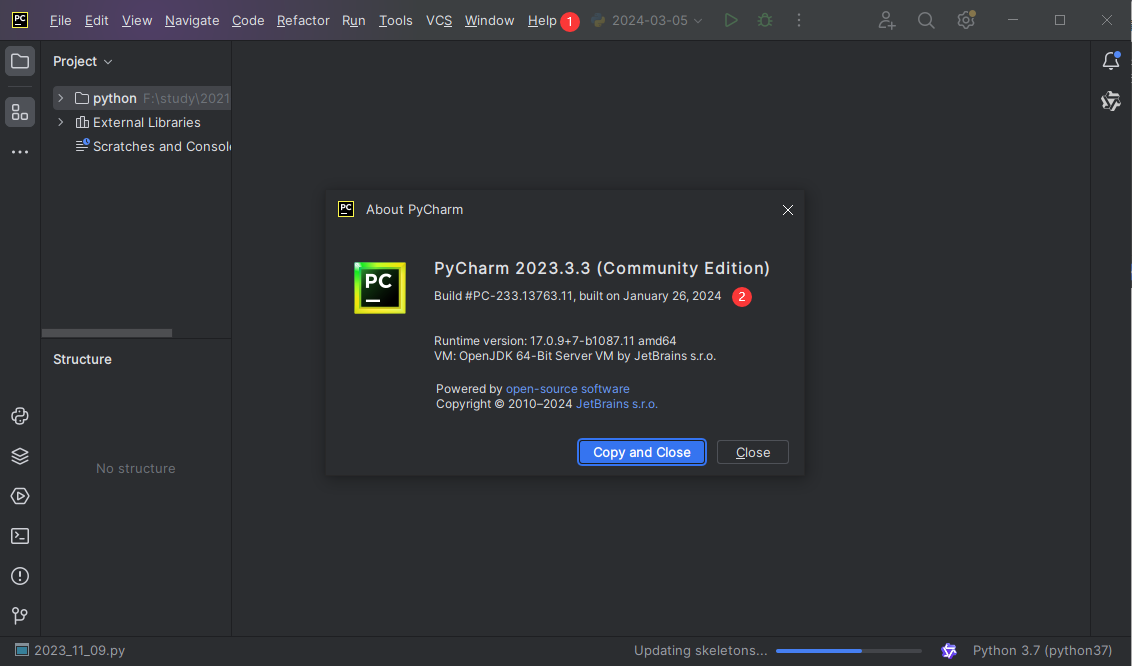
IDEA、PyCharm等基于IntelliJ平台的IDE汉化方式
PyCharm 或者 IDEA 等编辑器是比较常用的,默认是英文界面,有些同学用着不方便,想要汉化版本的,但官方没有这个设置项,不过可以通过插件的方式进行设置。 方式1:插件安装 1、打开设置 File->Settings&a…...
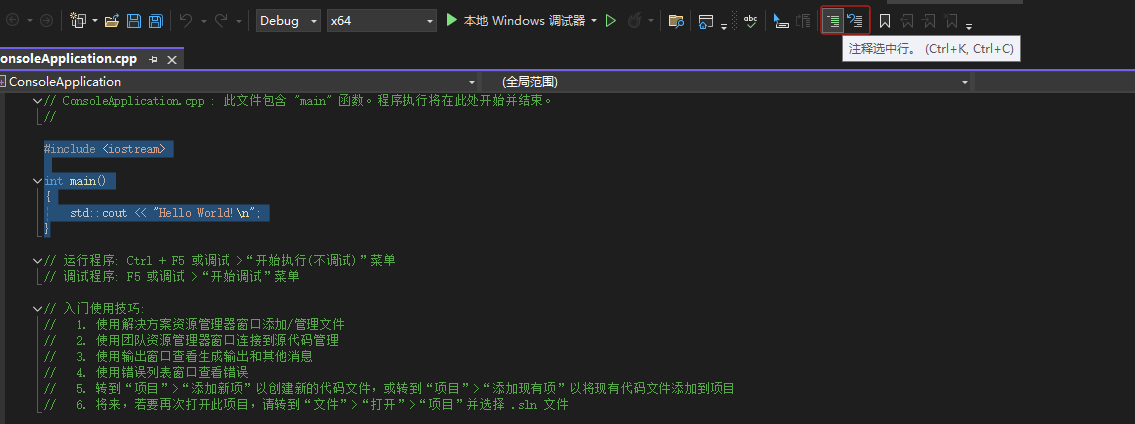
visual studio 创建c++项目
目录 环境准备:安装 visual studiovisual studio 创建c项目Tips:新建cpp文件注释与取消注释代码 其他初学者使用Visual Studio开发C和C时常遇到的3个坑 环境准备:安装 visual studio 官网:https://visualstudio.microsoft.com/zh…...

MGV电源维修KUKA机器人电源模块PH2003-4840
MGV电源维修 库卡电源模块维修 机器人电源模块维修 库卡控制器维修 KUKA电源维修 库卡机器人KUKA主机维修 KUKA驱动器模块维修 机械行业维修:西门子系统、法那克系统、沙迪克、FIDIA、天田、阿玛达、友嘉、大宇系统;数控冲床、剪板机、折弯机等品牌数控…...
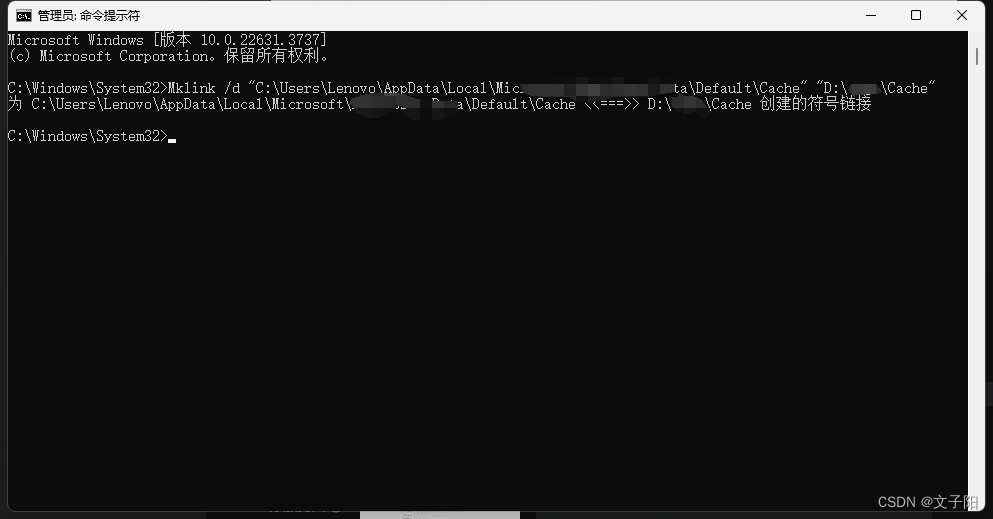
设置浏览器互不干扰
目录 一、查看浏览器文件路径 二、 其他盘新建文件夹Cache 三、以管理员运行CMD 四、执行命令 一、查看浏览器文件路径 chrome://version/ 二、 其他盘新建文件夹Cache D:\chrome\Cache 三、以管理员运行CMD 四、执行命令 Mklink /d "C:\Users\Lenovo\AppData\Loca…...

kafka操作命令详解
目录 1、集群运维命令 1.1、集群启停命令 1.3、集群迁移命令 1.4、权限管理命令 1.4.1、权限参数介绍 1.4.2、增加权限命令 1.4.3、移出权限命令 1.4.4、查看所有topic权限命令 1.4.5、查看某个topic权限命令 2、生产者命令 2.1、创建topic命令 2.2、删除topic命令 …...
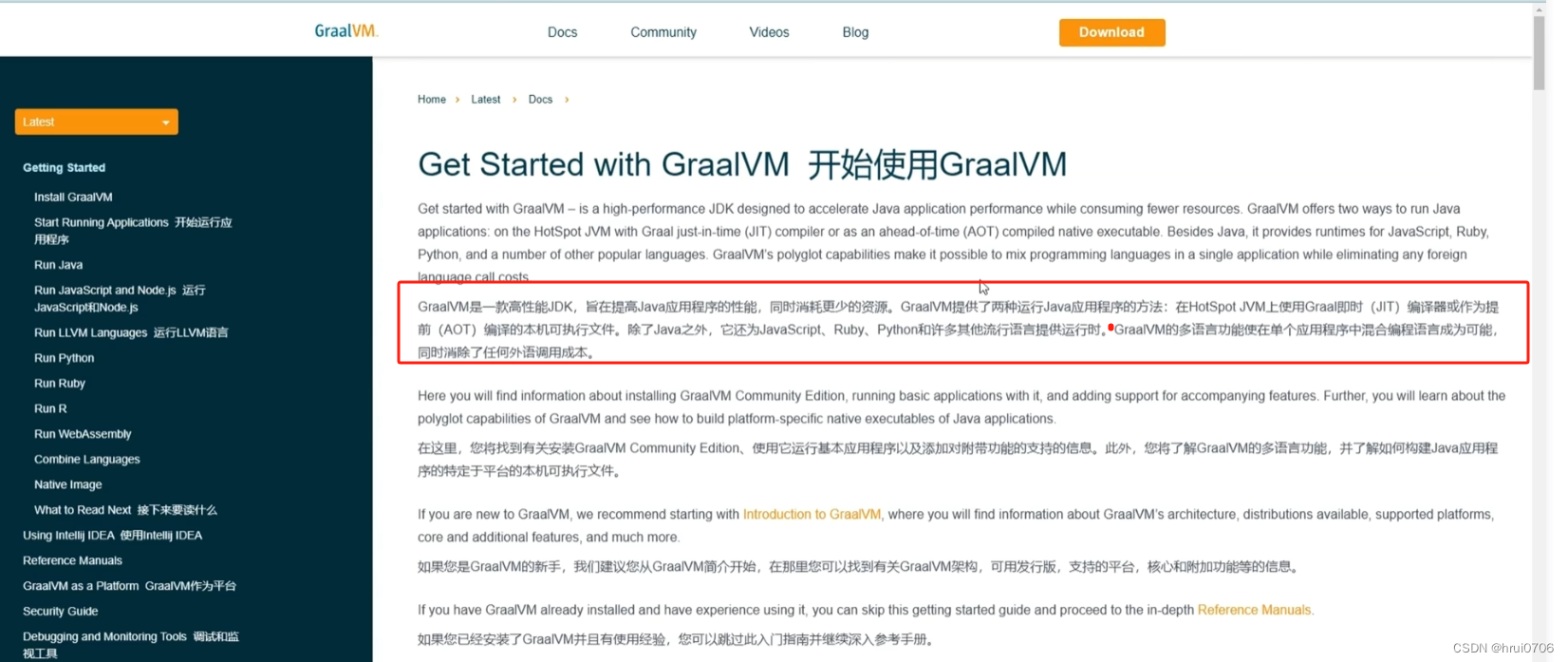
graalvm jdk和openjdk
下载地址:https://github.com/graalvm/graalvm-ce-builds/releases 官网: https://www.graalvm.org...

docker基础使用教程
1.准备工作 例子:工程在docker_test 生成requirements.txt文件命令:(使用参考链接2) pip list --formatfreeze > requirements.txt 参考链接1: 安装pipreqs可能比较困难 python 项目自动生成环境配置文件require…...

计算机网络 交换机的安全配置
一、理论知识 1.交换机端口安全功能介绍 交换机端口安全功能是针对交换机端口进行安全属性的配置,以控制用户的安全接入。主要包括以下两种配置项: ①限制交换机端口的最大连接数:控制交换机端口连接的主机数量;防止用户进行恶…...

深入解析大语言模型系列:Transformer架构的原理与应用
引言 在自然语言处理(NLP)领域,大语言模型(Large Language Models, LLMs)近几年取得了突破性的进展,而 Transformer 作为这些模型的核心架构,功不可没。本文将详细介绍 Transformer 的原理、结…...

uni-app地图组件控制
uni.createMapContext(mapId,this) 创建并返回 map 上下文 mapContext 对象。在自定义组件下,第二个参数传入组件实例this,以操作组件内 <map> 组件。 注意:uni.createMapContext(mapId, this) app-nvue 平台 2.2.5 支持 uni.create…...

前端调用api发请求常用的请求头content- type的类型和常用场景
Content-Type 是一个非常重要的HTTP头,它定义了发送给服务器或客户端的数据的MIME类型。这对于服务器和客户端正确解析和处理数据至关重要。下面是一些常见的 Content-Type 值及其用途和区别。 常见的 Content-Type 值 text/plain • 用途: 纯文本,无格…...

数据仓库之SparkSQL
Apache Spark SQL是Spark中的一个组件,专门用于结构化数据处理。它提供了通过SQL和DataFrame API来执行结构化数据查询的功能。以下是对Spark SQL的详细介绍: 核心概念 DataFrame: 定义: DataFrame是一个分布式数据集合,类似于关系型数据库中…...

如何在 MySQL 中导入和导出数据库以及重置 root 密码
前些天发现了一个巨牛的人工智能学习网站,通俗易懂,风趣幽默,忍不住分享一下给大家。点击跳转到网站。 如何导入和导出数据库 导出 要导出数据库,打开终端,确保你没有登录到 MySQL 中,然后输入以下命令&…...

基于uni-app和图鸟UI的云课堂小程序开发实践
摘要: 随着移动互联网的快速发展,移动学习已成为教育领域的重要趋势。本文介绍了基于uni-app和图鸟UI框架开发的云课堂小程序,该小程序实现了移动教学、移动学习、移动阅读和移动社交的完美结合,为用户提供了一个便捷、高效的学习…...

解决python从TD数据库取50w以上大量数据慢的问题
1.问题背景描述 python项目中的时序数据都存放在TD数据库中,数据是秒级存入的,当查询一周数据时将超过50w数据量,这是一次性获取全量数据到python程序很慢,全流程10秒以上,希望进行优化加速 2.排查 首先,…...

游戏心理学Day21
玩家情绪与暴力攻击 情绪 情绪的分类 情绪是一种经常波动的东西,我们既体验过骄傲激动和开心,也体验过羞怯内疚和沮丧。我们的感受高度依赖于情境。研究者区分出至少三种途径来考察作为一种相对固定的人格特征的情绪,即为情感性࿰…...

接口测试基础 --- 什么是接口测试及其测试流程?
接口测试是软件测试中的一个重要部分,它主要用于验证和评估不同软件组件之间的通信和交互。接口测试的目标是确保不同的系统、模块或组件能够相互连接并正常工作。 接口测试流程可以分为以下几个步骤: 1.需求分析:首先,需要仔细…...

贪心+动归1
跳跃游戏 给你一个非负整数数组 nums ,你最初位于数组的 第一个下标 。数组中的每个元素代表你在该位置可以跳跃的最大长度。 判断你是否能够到达最后一个下标,如果可以,返回 true ;否则࿰…...
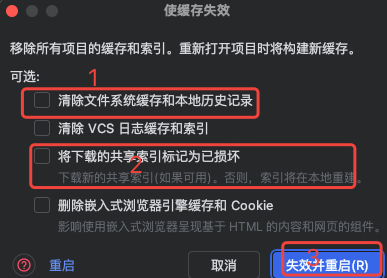
idea大量爆红问题解决
问题描述 在学习和工作中,idea是程序员不可缺少的一个工具,但是突然在有些时候就会出现大量爆红的问题,发现无法跳转,无论是关机重启或者是替换root都无法解决 就是如上所展示的问题,但是程序依然可以启动。 问题解决…...
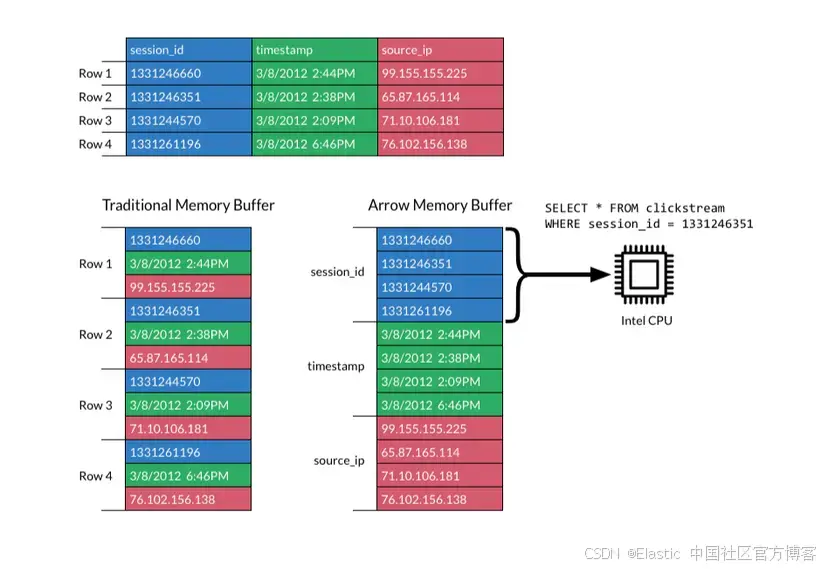
JavaScript 中的 ES|QL:利用 Apache Arrow 工具
作者:来自 Elastic Jeffrey Rengifo 学习如何将 ES|QL 与 JavaScript 的 Apache Arrow 客户端工具一起使用。 想获得 Elastic 认证吗?了解下一期 Elasticsearch Engineer 培训的时间吧! Elasticsearch 拥有众多新功能,助你为自己…...
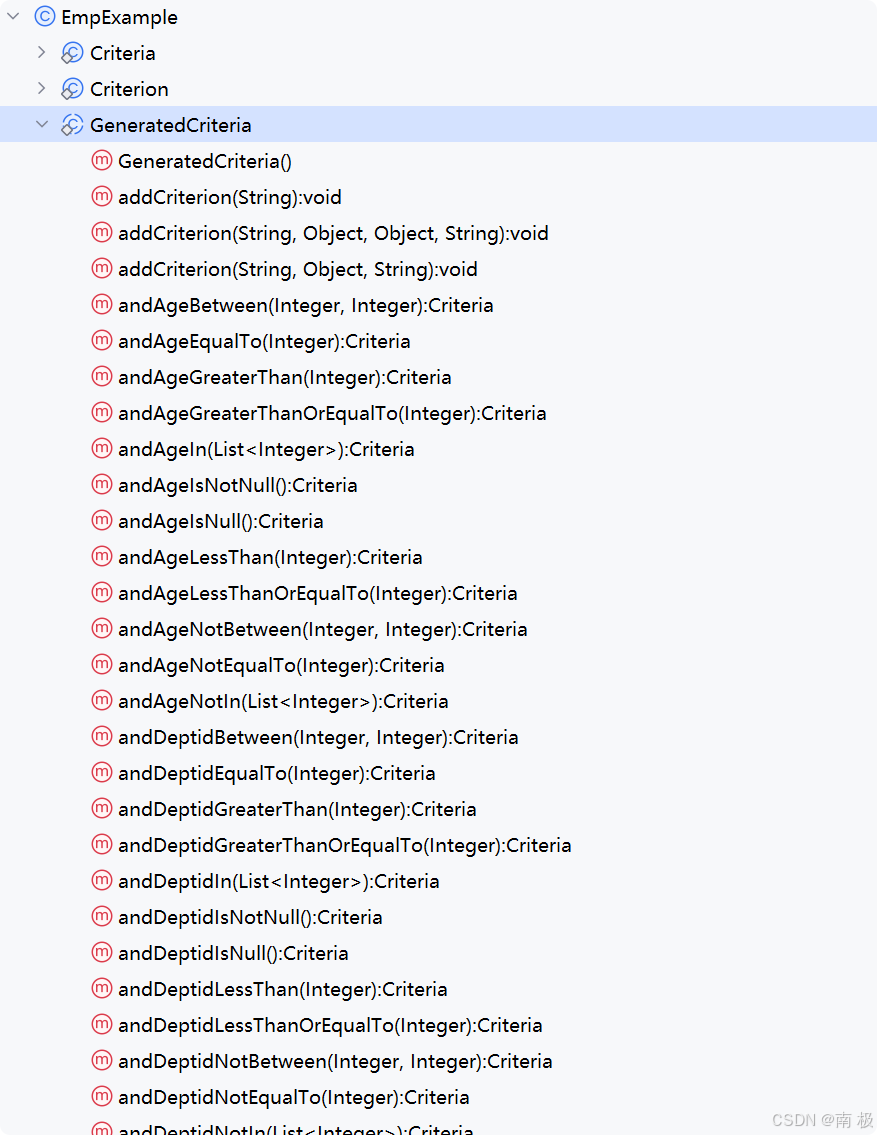
Mybatis逆向工程,动态创建实体类、条件扩展类、Mapper接口、Mapper.xml映射文件
今天呢,博主的学习进度也是步入了Java Mybatis 框架,目前正在逐步杨帆旗航。 那么接下来就给大家出一期有关 Mybatis 逆向工程的教学,希望能对大家有所帮助,也特别欢迎大家指点不足之处,小生很乐意接受正确的建议&…...

pam_env.so模块配置解析
在PAM(Pluggable Authentication Modules)配置中, /etc/pam.d/su 文件相关配置含义如下: 配置解析 auth required pam_env.so1. 字段分解 字段值说明模块类型auth认证类模块,负责验证用户身份&am…...

数据链路层的主要功能是什么
数据链路层(OSI模型第2层)的核心功能是在相邻网络节点(如交换机、主机)间提供可靠的数据帧传输服务,主要职责包括: 🔑 核心功能详解: 帧封装与解封装 封装: 将网络层下发…...
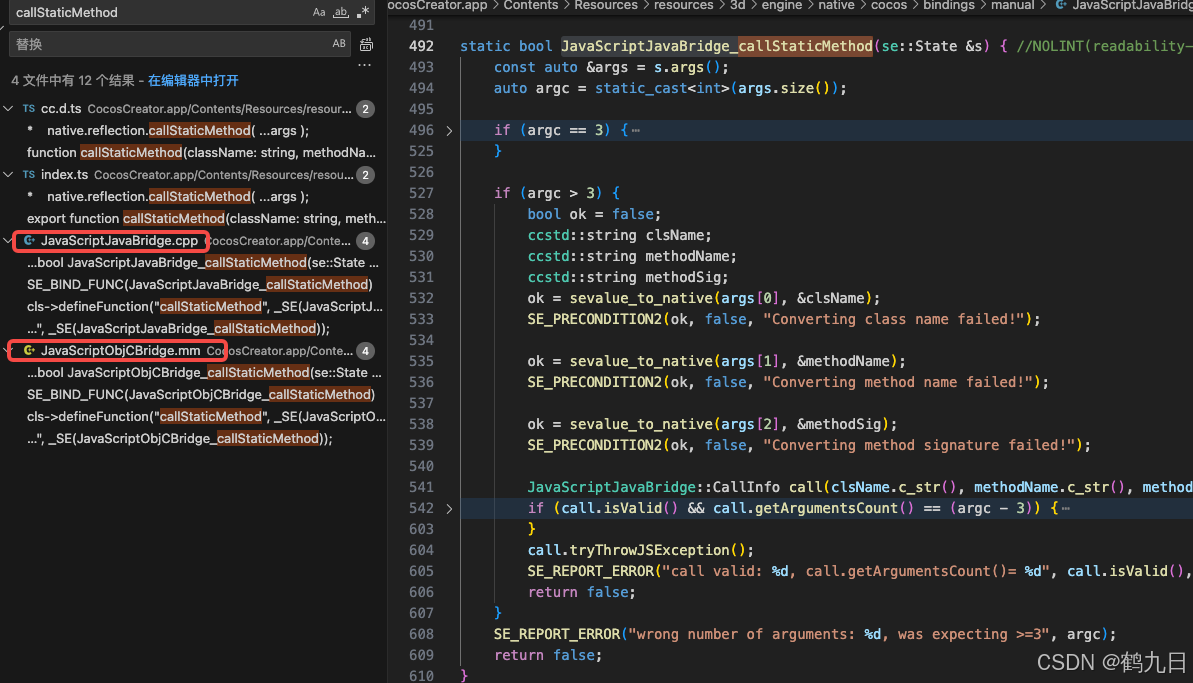
CocosCreator 之 JavaScript/TypeScript和Java的相互交互
引擎版本: 3.8.1 语言: JavaScript/TypeScript、C、Java 环境:Window 参考:Java原生反射机制 您好,我是鹤九日! 回顾 在上篇文章中:CocosCreator Android项目接入UnityAds 广告SDK。 我们简单讲…...

Ascend NPU上适配Step-Audio模型
1 概述 1.1 简述 Step-Audio 是业界首个集语音理解与生成控制一体化的产品级开源实时语音对话系统,支持多语言对话(如 中文,英文,日语),语音情感(如 开心,悲伤)&#x…...

鱼香ros docker配置镜像报错:https://registry-1.docker.io/v2/
使用鱼香ros一件安装docker时的https://registry-1.docker.io/v2/问题 一键安装指令 wget http://fishros.com/install -O fishros && . fishros出现问题:docker pull 失败 网络不同,需要使用镜像源 按照如下步骤操作 sudo vi /etc/docker/dae…...
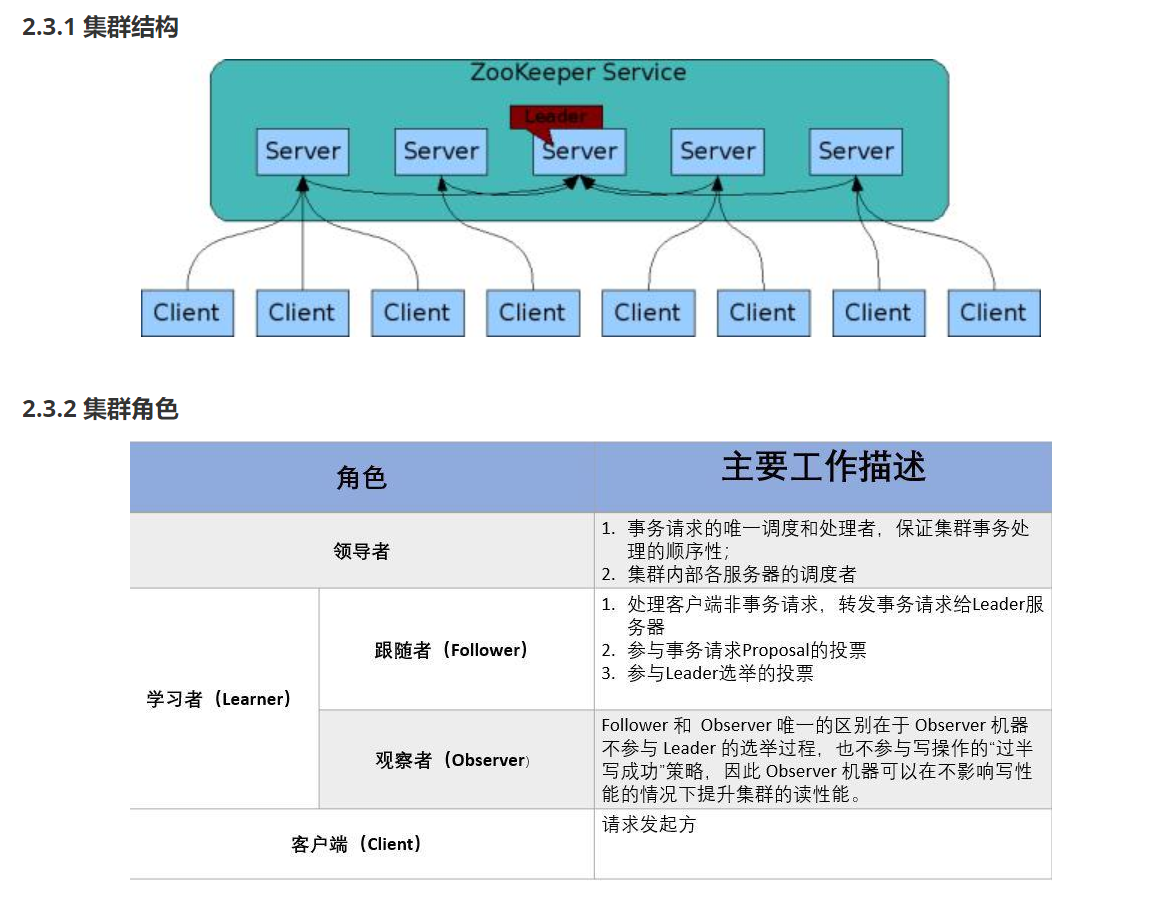
HDFS分布式存储 zookeeper
hadoop介绍 狭义上hadoop是指apache的一款开源软件 用java语言实现开源框架,允许使用简单的变成模型跨计算机对大型集群进行分布式处理(1.海量的数据存储 2.海量数据的计算)Hadoop核心组件 hdfs(分布式文件存储系统)&a…...
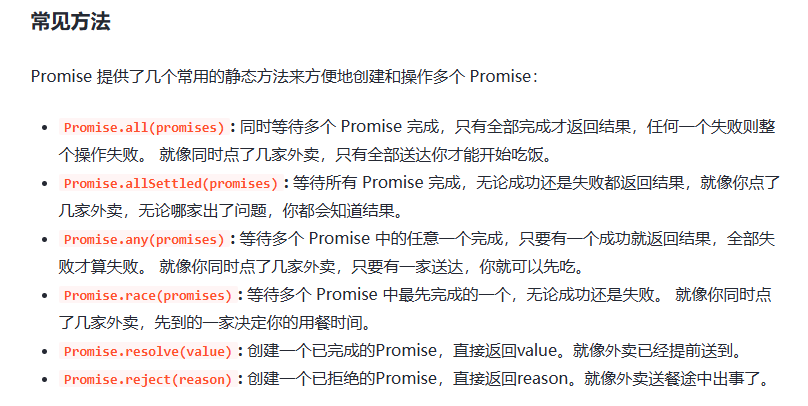
处理vxe-table 表尾数据是单独一个接口,表格tableData数据更新后,需要点击两下,表尾才是正确的
修改bug思路: 分别把 tabledata 和 表尾相关数据 console.log() 发现 更新数据先后顺序不对 settimeout延迟查询表格接口 ——测试可行 升级↑:async await 等接口返回后再开始下一个接口查询 ________________________________________________________…...
